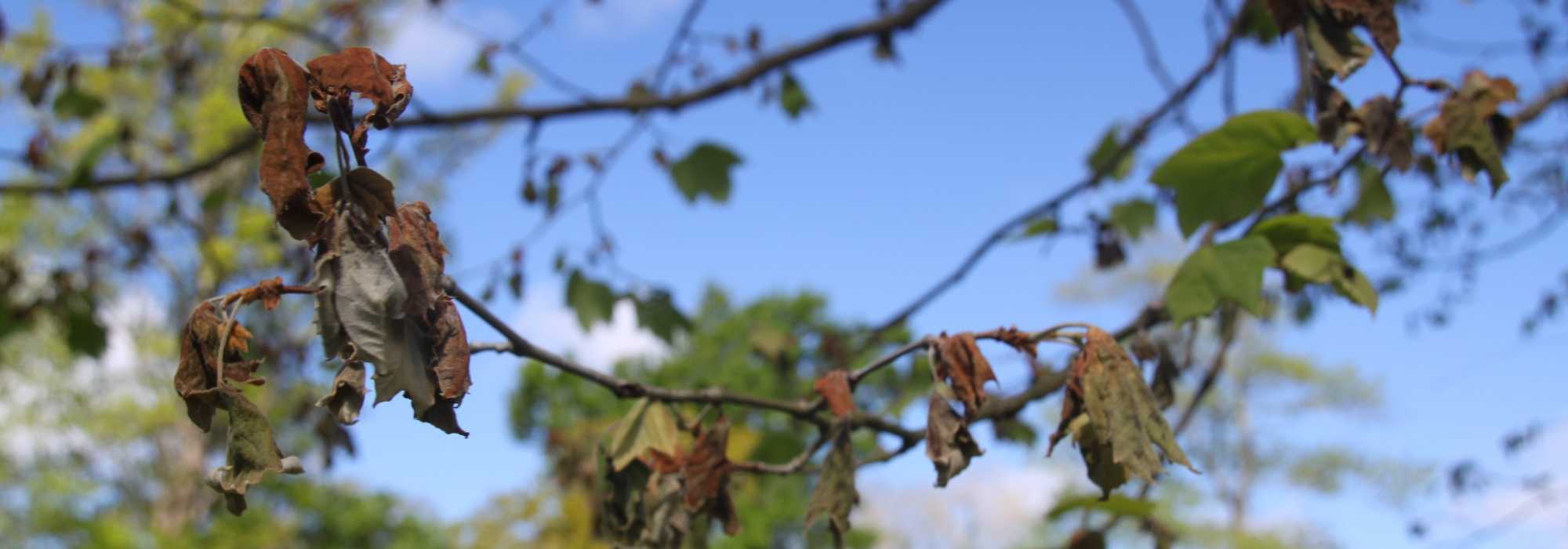
Anthracnose
Managing anthracnose on beans, raspberries and willows...
Contents
Anthracnose is a disease caused by various fungi capable of infecting vegetable plants such as beans, peas, small fruits (currants, raspberries), but also plane tree, Judas tree, willow, walnut… It is favoured by high humidity combined with temperatures specific to each fungus, sometimes cool as with plane-tree anthracnose, sometimes high (above 20°C) on vegetable plants. It most often appears as beige or brown spots on foliage, and stem dieback that weakens plants and can cause major damage to vegetable harvests in particular.
Which species are susceptible to anthracnose?
Many plants are infected but impact of Anthracnose, apart from bean, is often minor and does not justify treatment.
Vegetable garden and orchard
It is in the vegetable garden that Anthracnose causes the most problems :
- bean (Colletotrichum lindemuthianum) ;
- lettuce (Microdochium panattonianum) especially under cover in winter or outdoors ;
- pea (Ascochyta pisi) transmitted only by seed ;
- strawberry (Colletotrichum acutatum) ;
- tomato (Colletotrichum divers) in open-field cultivation and home gardens.
- in family Cucurbitaceae (melons, cucumbers, squashes) where disease induced by Colletotrichum orbiculare is called Nuile rouge. It occurs mainly in countries with humid climate, temperate to tropical, so it is rarely encountered in France, especially as it is fairly well controlled by an application of fungicidal treatment such as horsetail decoction. Young sowings are a little more susceptible, so ensure good ventilation.
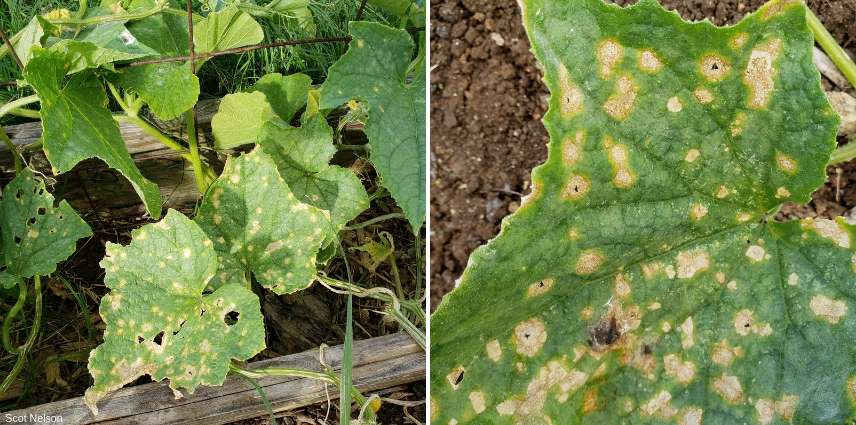
Cucumber leaves showing spots, a sign of disease
- Small fruits are the most affected such as raspberry and bramble-raspberry (Elsinoe veneta), currants for fruit or flower (Gleosporium ribis), as well as grapevine (Elsinoe ampelina).
- In cherry, disease is called cherry anthracnose or cylindrosporiosis (Blumeriella jaapii).
- In walnut (Gnomonia leptostyla), oak..
Among ornamental plants
- Plane tree planted along streets is also very often a victim of Anthracnose (Apignomonia veneta) in spring.
- Judas tree (Cercis siliquastrum),
- Cornouillers alba and florida are particularly susceptible during wet seasons (Discura destructiva),
- hydrangea,
- rosebush,
- willow…
Read also
Brown rot of fruit treesHow to recognise anthracnose?
- Anthracnose on bean appears as elongated blackish lesions that become necrotic on leaves and stems. Pods bear round spots covered with pinkish pustules that become pitted and are ringed with red while seeds become stained brown and inedible.
- On melon, round blackish spots 1–2 cm in diameter later covered with a pinkish mould maculate the fruit.
- On currants (cluster and gooseberry types) and blackcurrants, the disease is noticed in June–July as angular white spots edged with red‑brown associated with premature leaf fall and even drying out of the clusters.
- On raspberry, dark brown lesions mark stems in June, followed by violaceous macules in August around buds, which grey in the centre in winter, leading to drying out of the stem. Leaves sometimes develop purple stains.
- On strawberry, brown spots ringed with a yellow halo of 1–2 cm appear on leaves, then on stems and fruits: depressed necroses of 1–2 cm that move from brown to pink (spores) then to black.
- Tomato bears small pale‑brown slightly depressed lesions which, as they enlarge, can cause fruit rot.
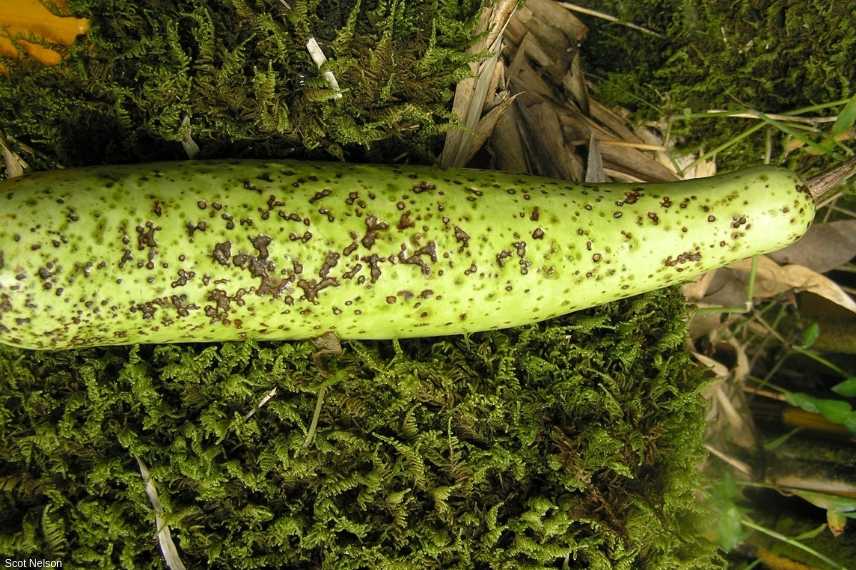
Cucumber affected by anthracnose
- On vine, spotted anthracnose appears as angular black or violaceous spots 1–5 mm across whose tissue desiccates then perforates, causing lamina deformation and tearing. Elongated cankers bordered in black maculate the shoot and the tips of young shoots look scorched.
- On plane tree, necroses appear along the veins, spreading over part of the lamina so that the leaf curls and falls. Cankers cause drying out of buds before the bud burst period. Mature tree refoliates with healthy foliage once temperatures rise.
- Judas tree also shows similar signs sometimes confused with another fungus, septoria: grey to brown roundish spots covered with small blackish pits.
- On cherry, round reddish‑violaceous spots appear on upper leaf surfaces around mid‑May; leaves eventually yellow and sometimes fall prematurely. Repeated defoliation over several years makes trees more susceptible to winter frosts and reduces cherry yield.
- On willow, small pale‑brown lesions run along stems and reddish spots appear on leaves. These leaves eventually fall and terminal shoots wilt. Weeping willow may lose its habit.
- On walnut, grey spots edged with brown on leaves and dried burs that remain attached to the shell are signs of anthracnose.
- Cornus alba and Cornus florida present reddish to brown foliar spots covered with small blackish pits and cankers on shoots, which helps distinguish it from septoria.
Discover other Grapevines
View all →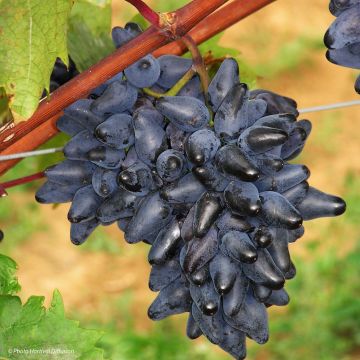
Available in 1 sizes
Available in 1 sizes
Available in 1 sizes
Available in 1 sizes
Available in 1 sizes
Available in 1 sizes
Available in 1 sizes
Available in 1 sizes
Available in 1 sizes
Available in 2 sizes
Factors favouring anthracnose
Excess moisture is the main cause of the disease as it promotes germination of spores persisting in soil, on plant debris, in cracks of bark for several years. However, when it occurs during the season depends on the fungus and is influenced by specific temperatures :
- Rainy periods from early summer to late autumn are responsible for anthracnose in beans.
- Rainy, windy periods in spring favour anthracnose in raspberry plants.
- Warm, humid conditions, such as under a tunnel, favour anthracnose in melons.
- In plane trees, the disease appears in spring during cool, rainy weather, causing shedding of infected foliage but without serious consequences for mature trees as infection stops as soon as weather becomes dry and warm.
- Temperatures of 16 to 20°C combined with high humidity favour anthracnose in cherry trees, etc.
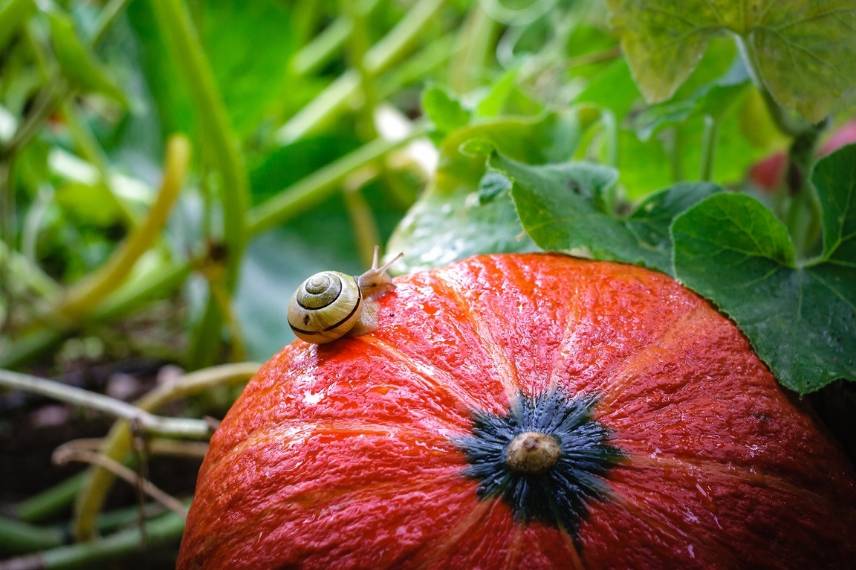
Control and treatment of anthracnose
Simple actions common to all crops
Generally, a few simple measures are enough to prevent Anthracnose :
- Aerate crop by planting at lower densities or removing foliage ;
- Monitor crops and remove spotted leaves or entire infected plants promptly ;
- In winter, collect and burn diseased leaves fallen from fruit trees ;
- Avoid wetting foliage when watering ;
- Avoid gardening (hoe, prune, harvest…) during periods of high humidity ;
- Avoid excessive nitrogen inputs which make plant tissues more vulnerable ;
- Preventively, treat with copper or with a horsetail decoction every 2–3 weeks (strawberries, tomatoes, cucumber….) Willow bark decoction is authorised to act against foliar fungi on fruit trees; if necessary, apply weekly.
You will find information and recipe for a copper-based treatment in our advice sheet “Bordeaux mixture and other copper treatments”.
Some actions specific to each plant
For beans :
- Avoid sowing beans on infected ground for 5–6 years.
- Choose resistant varieties such as filament dwarf ‘Marbel’, filament with pods marbled purple ‘César’, dwarf butter ‘Rocdor’ or dwarf mangetout ‘Primel’ ;
For melon :
- Respect a long rotation of 5–6 years ;
- Treat with Bordeaux mixture from flowering.
For raspberry :
- Remove diseased canes as soon as possible ;
- Treat with Bordeaux mixture in spring once buds reach 1 cm in length.
- Plant resistant varieties such as Malling Amiral and Leo.
For currant :
- Collect and burn fallen leaves.
- Spray a fungicidal (copper) at end of flowering, 15 days later and again after harvest.
For cherry tree :
- Prune to properly aerate branches.
- Treat with Bordeaux mixture before bud burst period and just before leaf fall.
For grapevine :
- Apply Bordeaux mixture at first symptoms,
- Treat trunks with oil in winter.
- Subscribe!
- Contents
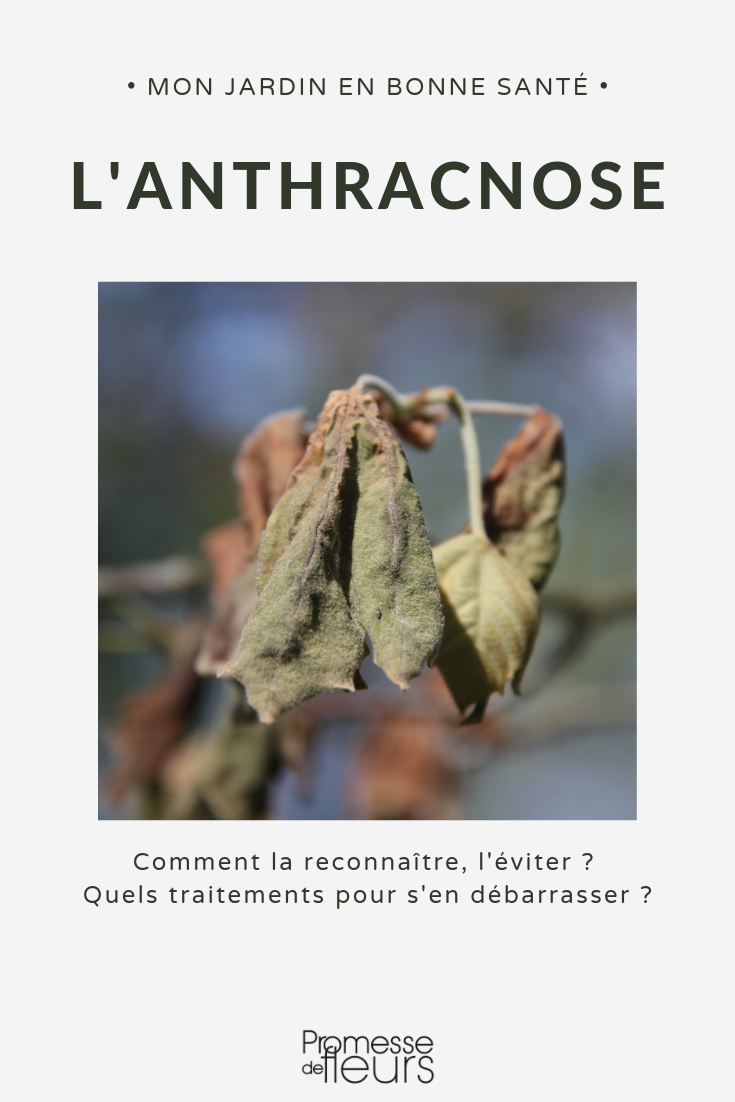































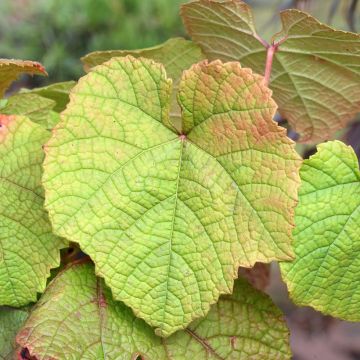
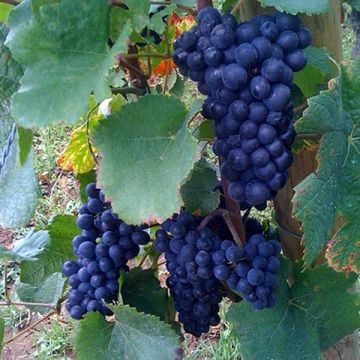
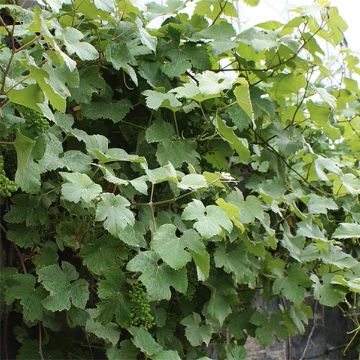
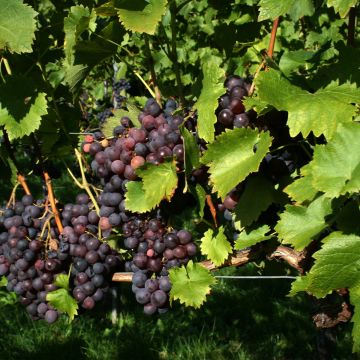
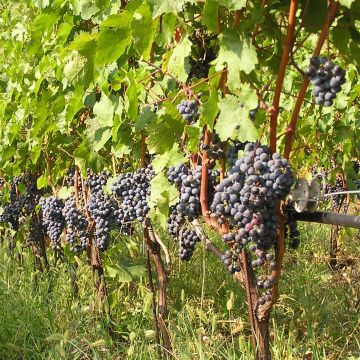
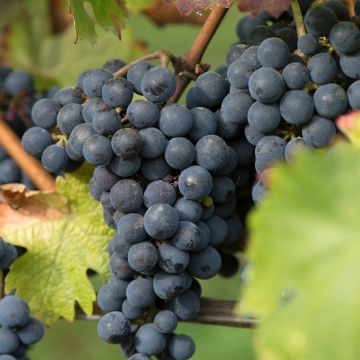
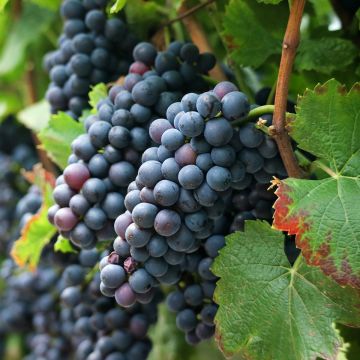
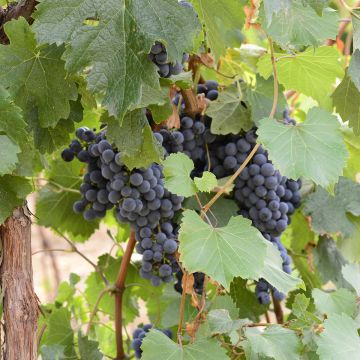
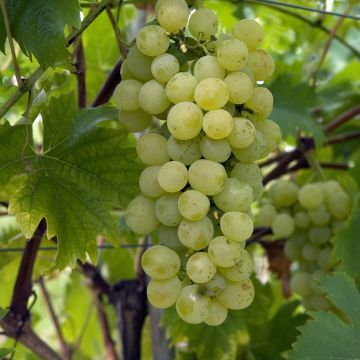
Comments